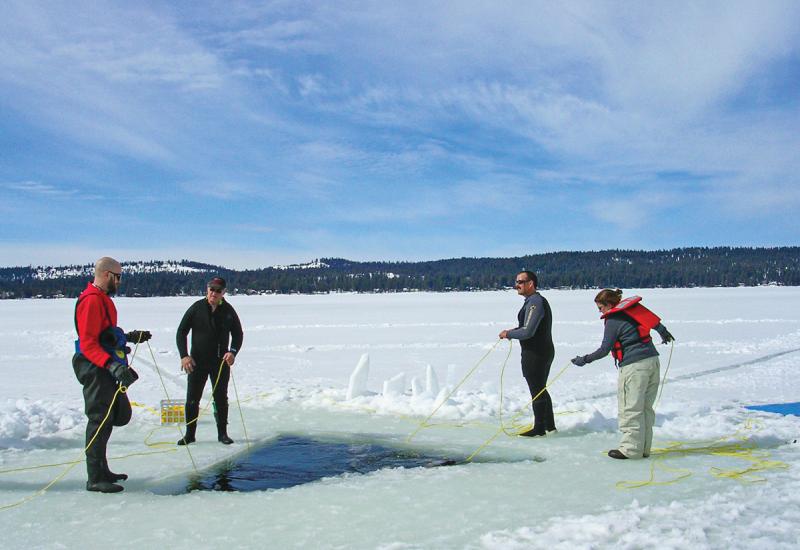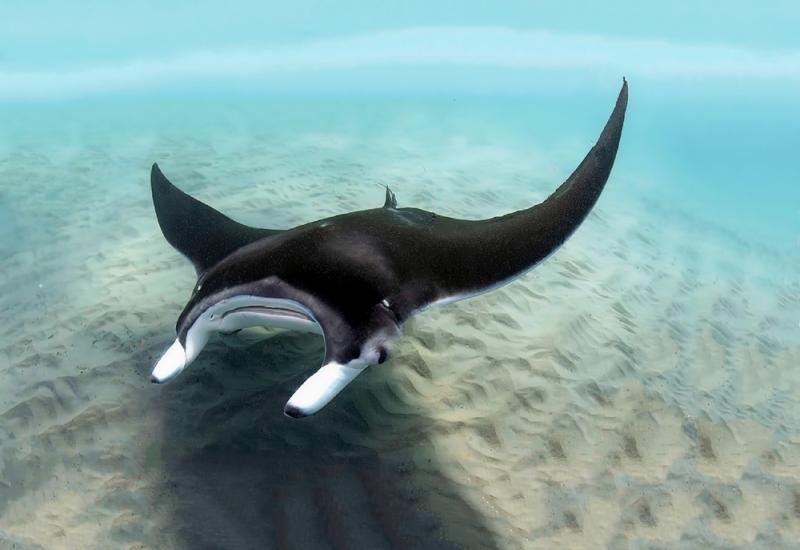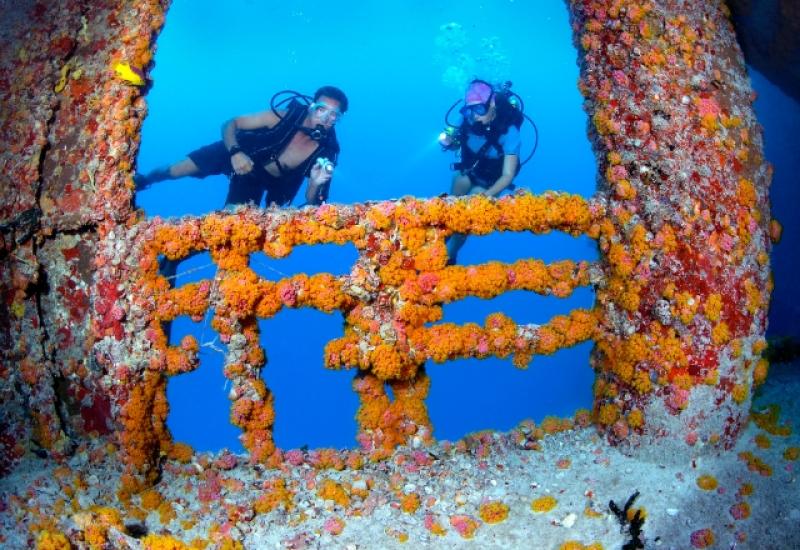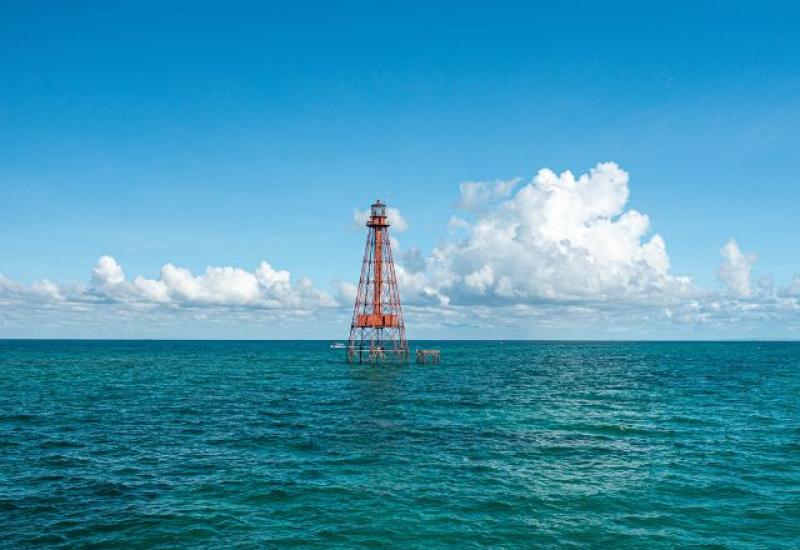What It's Like to Be an Aquarium Diver
There is much more to aquarium care than feeding fish. As an aquarist, we not only care for the animals but we also care for their exhibits.
Aquarists often dive to target feed certain fish that are too slow during normal feeds and might not be eating enough. Dives are also needed for tank repairs, to remove sick animals or to make up-close observations.
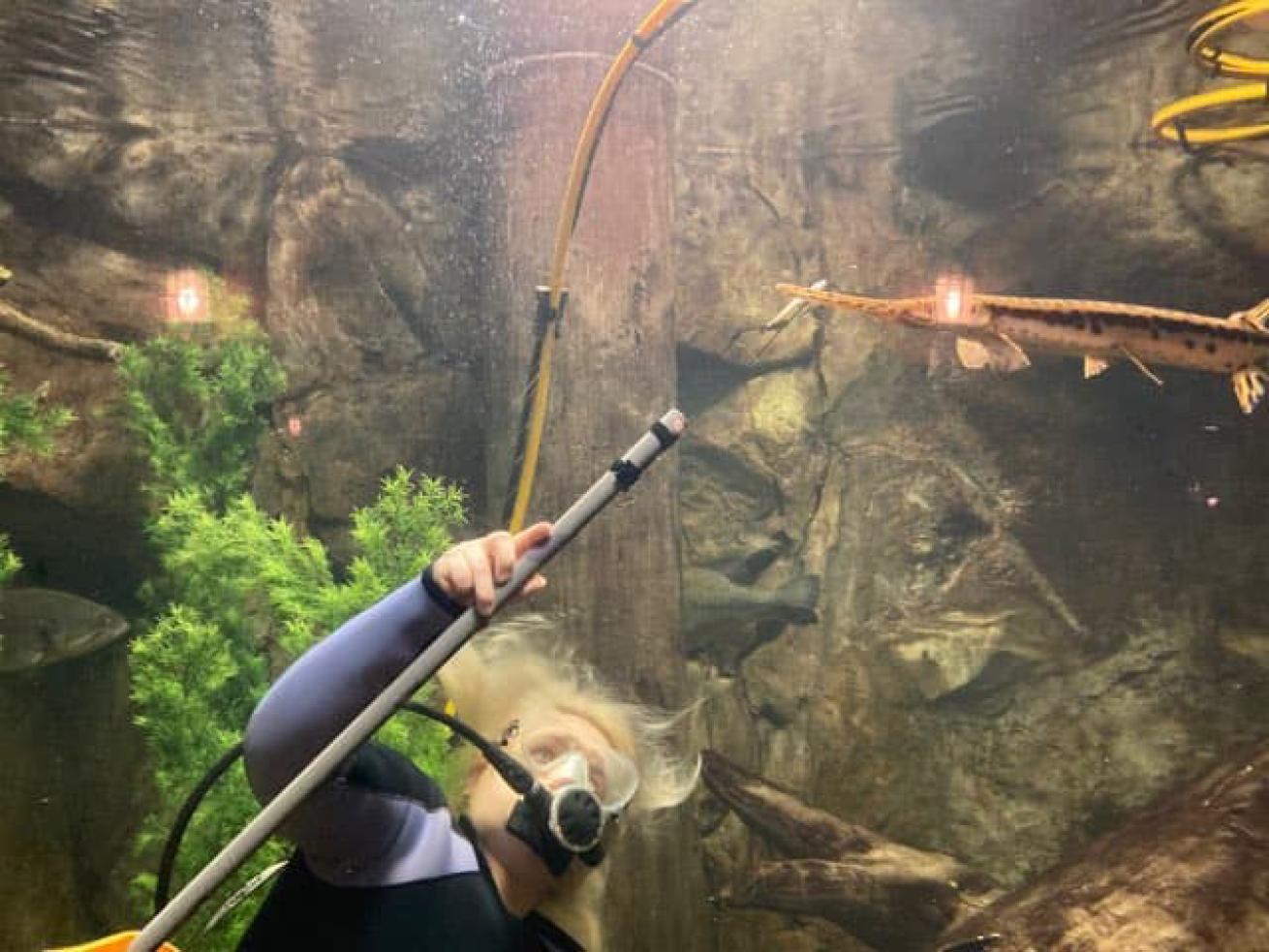
Courtesy Cat HarrisCandace Sparkman target feeds a longnose gar in her care at Cabela’s in Hoffman Estates, Illinois.
To dive aquariums you must be a certified Open Water diver. The rest of the training on how to clean and vacuum are done on the job. Some aquariums allow volunteer divers and may require additional certifications or a minimum amount of logged dives.
How does one clean an aquarium? For people with smaller tanks at home that means changing the water and using specialized tools to clean everything without getting wet. For larger aquariums that means we get to go diving.
The tank at Cabela’s in Dundee, MI is 45,000 gallons of freshwater kept at a constant 66°F. Our team cares for other tanks of similar size and some that contain saltwater. The priority is keeping the acrylic clean and vacuuming up the excess detritus (fish poop and uneaten food). Acrylic gets scrubbed first, then the walls, rocks and fixtures, and then we vacuum. The vacuum is a PVC tube on a pool hose that is connected to a one-horsepower pool pump.
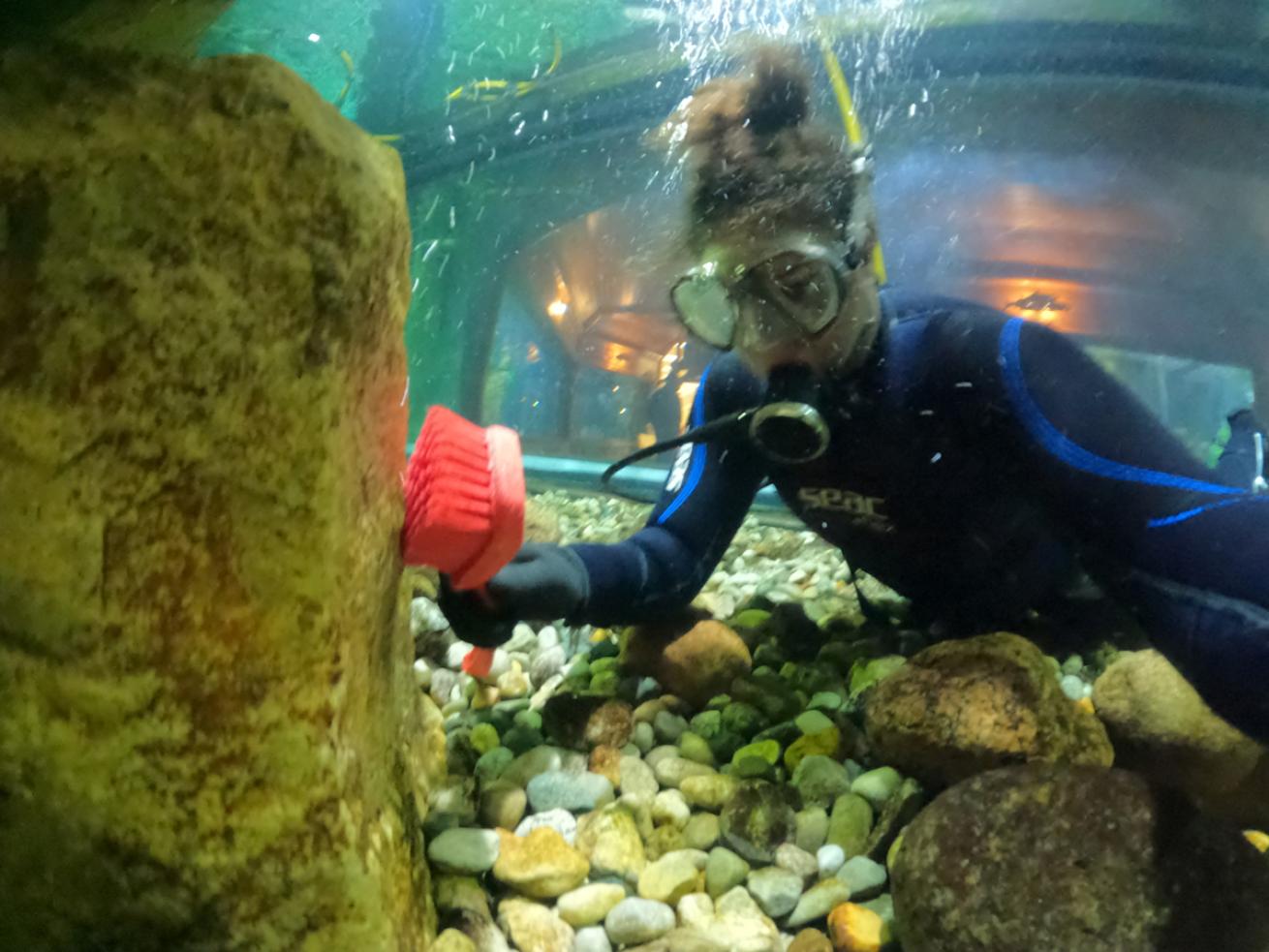
Courtesy Cat HarrisScrubbing the rocks, walls and acrylic in Dundee, Michigan.
After a little wet suit dance, I climb the 10 ft ladder up to the top of the fish tank and meet my dive tender, who remains topside on “mermaid duty.” I’ll brief him on the dive plan for the day, “tug on my line in 30 minutes to let me know it’s time to start scrubbing the walls. I’m going to scrub the acrylic first then vacuum the bottom in about an hour and a half.”
I then lay out my equipment, an air compressor and airline connected to a regulator, all attached to a nylon belt. A weight belt, mask and gloves, a suction cup and acrylic safe scrub pad as well as hard-bristled deck or grout brushes for scrubbing the rocky walls. After putting everything on and situating myself on top of a large log meant for tank decoration, I slide underneath the surface and get to work.
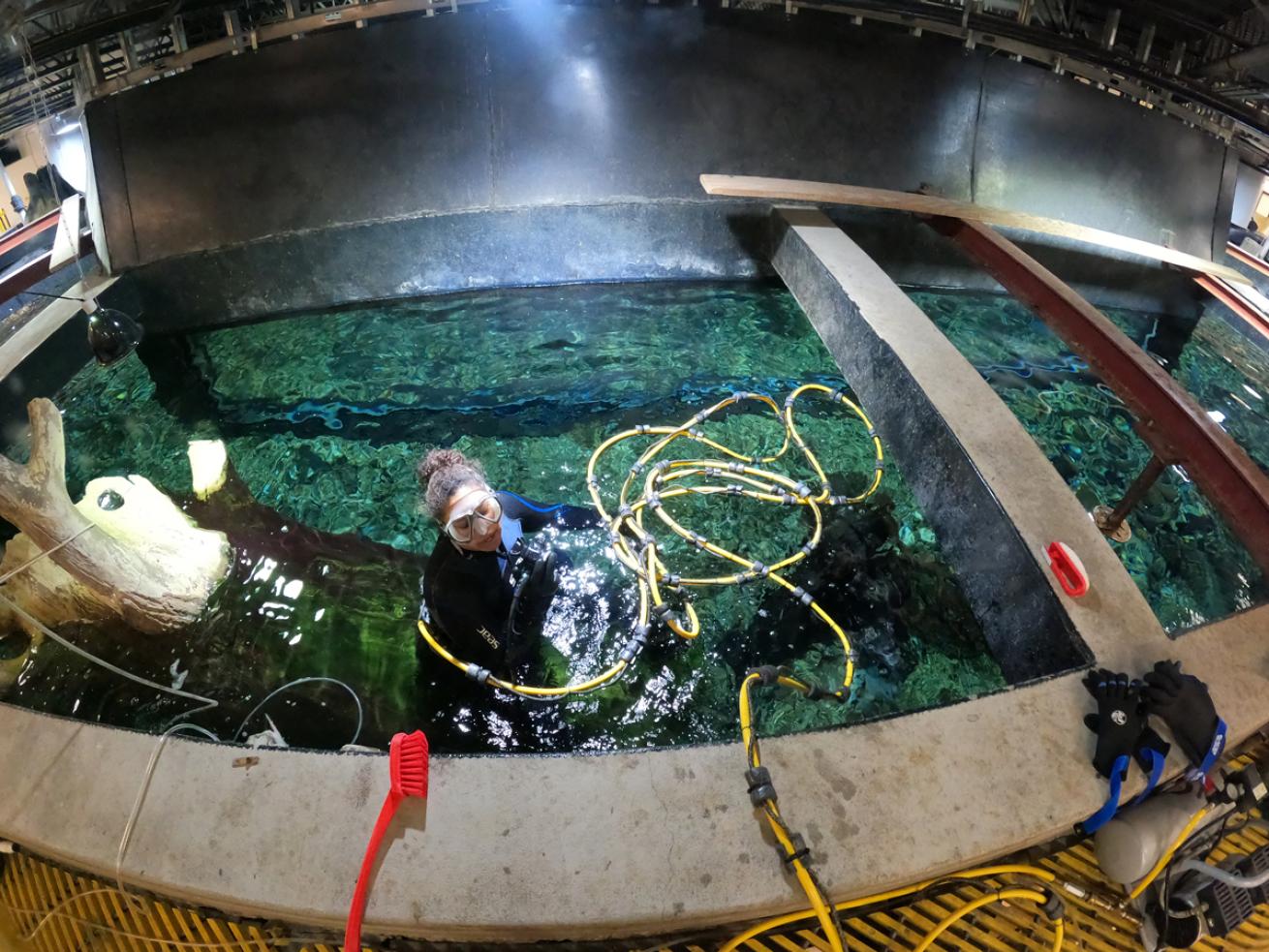
Courtesy Cat HarrisPreparing for a dive at Cabela’s in Dundee, Michigan.
Aquarium dives are just as customizable as an open water dive. I personally do not use fins, because the tanks I care for are too narrow and heavily populated. Other aquarists use full-face masks. You might even catch one of us dressed up for the holidays while diving. Dive time depends on how much work there is to do, but on average since I am using a compressor my bottom time can run up to two hours. A dive a week keeps the algae asleep. It can be a hard job with lots of tasks, but overall I find it fun and rewarding. No one likes a dirty fish tank!
Cat Harris, is Vice President of the Michigan African American Scuba Klub (MASK) and Lead Aquarist with Aquamoon LLC. Aquamoon’s team is spread-out nationwide building and maintaining fish tanks in homes, businesses, and educational facilities.

